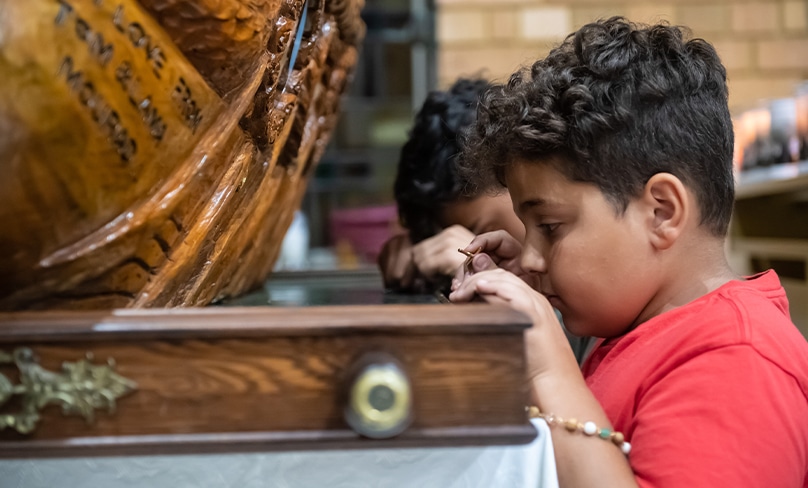
By George Al-Akiki
With the rain coming down aggressively one day recently, a friend caught an Uber from work, and in her polite demeanour engaged with her driver’s equally polite conversation.
A retired engineer driving a young accountant, the two discussed their corporate lifestyles, family, and the state of the world. By trip’s end, they came to the same conclusion: that “people just need to be good to each other.”
It’s a lesson that can be viciously removed by the natural demands of adulthood. Colleagues become exhausting, friends and family get frustrating, and there are those we would rather not deal with at all.
Still, to be a good person certainly is an underrated factor of, and plays into, the ultimate individual Catholic mission—to reach sainthood.
The suggestion of becoming a saint seems on the surface absurd, even blasphemous. When first the thought was put to me, I scoffed at even considering it a possibility.
For starters, since the beginning of the Maronite Church in the 5th century, there have been only three canonised Maronite saints (four including St Maroun, the Syriac father of the Maronites). Sure, let’s include in the Three Massabki Martyrs approved for canonisation recently by the Vatican, and perhaps other saints in waiting, blesseds Estephan Douaihy and Estephan Nehme.
In 1,500 years of Maronite tradition, the number of saints and blesseds doesn’t even crack double digits. There are certainly more cousins on just one side of a Lebanese-Maronite family than this.
So, it seems ambitious to want to join this elite league.
The misconception begins here, when recognising these good and holy fruits of the church to also be unattainable ones.
Though originating from varying historical periods, a glance at these saints tells their similarities and relevance to the modern road to sainthood.
St Maroun, a monastic, lived through missionary work and his example. St Charbel, a man drawn to the lives of saints himself, often sought completing his monastery’s most difficult work, offering it up to God. St Rafqa committed to her convent work without complaint. St Nehmetallah, assessing the Lord in his superiors, found joy in service through their orders.
Examining their commonalities at face value, it is fair to determine they were good people committed to good works, shaped by their faithful devotion.
It is diminishing to critique role models of the church as completely other or separate to our own capabilities. Rather, it is good practice to recognise the commonalities shared with them (without invoking the sin of pride) and to learn from them what is lacking.
Out of curiosity, a Google search on “How to become a saint” led me to WikiHow, which reflected this perceived barrier to sainthood. On the point of living “an exemplary and pious life,” the suggestion is to “Think big! … your exemplary life is more likely to be recognised if you have a bigger, more globally noticeable impact.”
This very much plays into the concern that the reservation for sainthood requires a level of unattainable holiness. Such is hypocritical, as each saint’s life and canonisation are proof from God that sainthood is the attainable goal he puts to us.
It is also harmful to become bogged down in perceiving that imperfection removes any potential life of holiness. Examining the very real imperfections of many saints disproves this (Sts Augustine or Paul for example).
We tend to not give ourselves enough credit and in doing so, stagnate our religious growth, which is where the opportunity for sainthood lies.
This Golden Jubilee year gives Australian Maronites the chance to connect with the saints as their relics tour the country’s Maronite churches.
Relics of Sts Maroun, Charbel, Rafqa and Nehmetallah alongside SaiStnt Mary of the Cross MacKillop provide the opportunity to reflect their holy adherence to God.
Sainthood is reserved for an elite company. The opportunity for sainthood is not exclusively reserved for an elite company.
One need not necessarily be a priest or nun, or have a master’s degree in theology, or commit to martyrdom. The Maronite saints are examples of simplicity in devotion and love.
God puts this mission to all baptised, the mission to be good people, people of faith and love, saints of the Catholic Church.
George Al-Akiki is a parishioner at Our Lady of Lebanon Co-Cathedral in Harris Park and is a recent graduate of a Bachelor of Media (Communication and Journalism) from UNSW.
